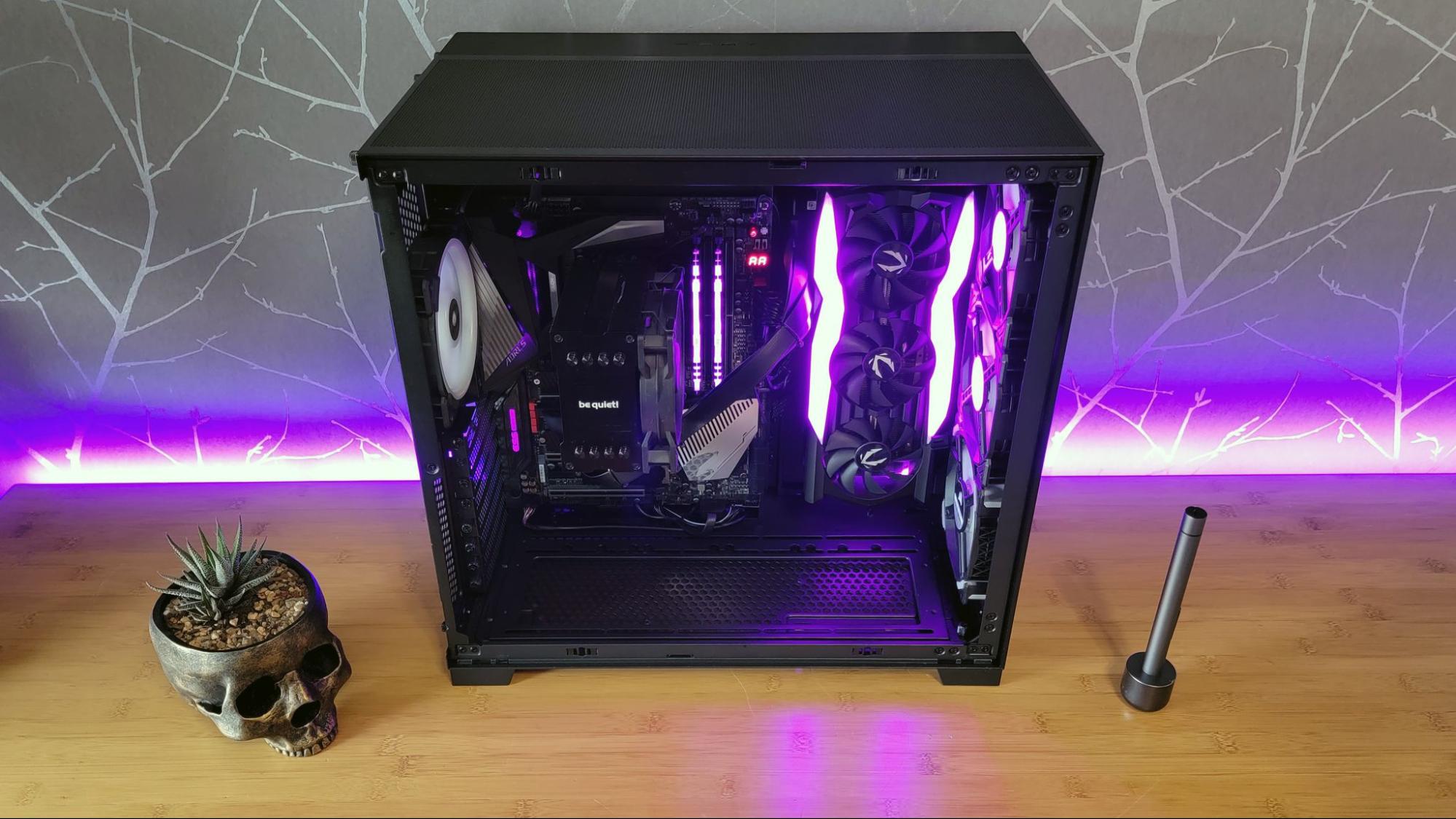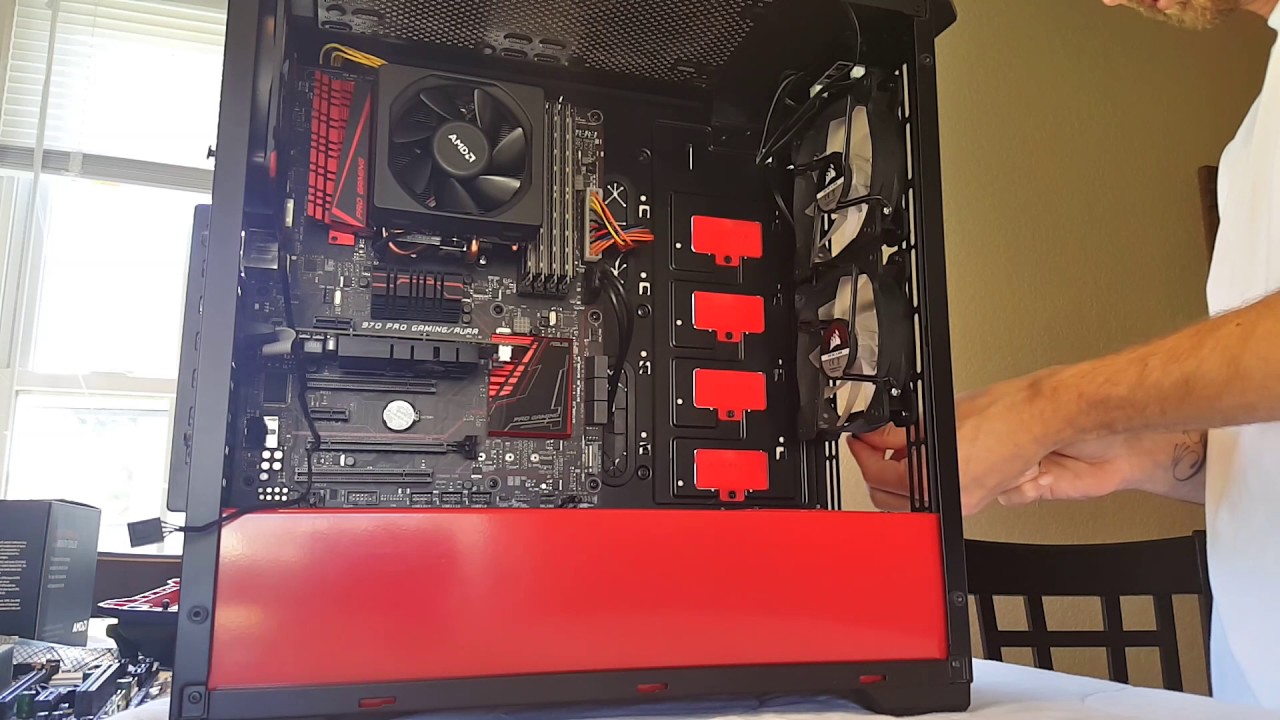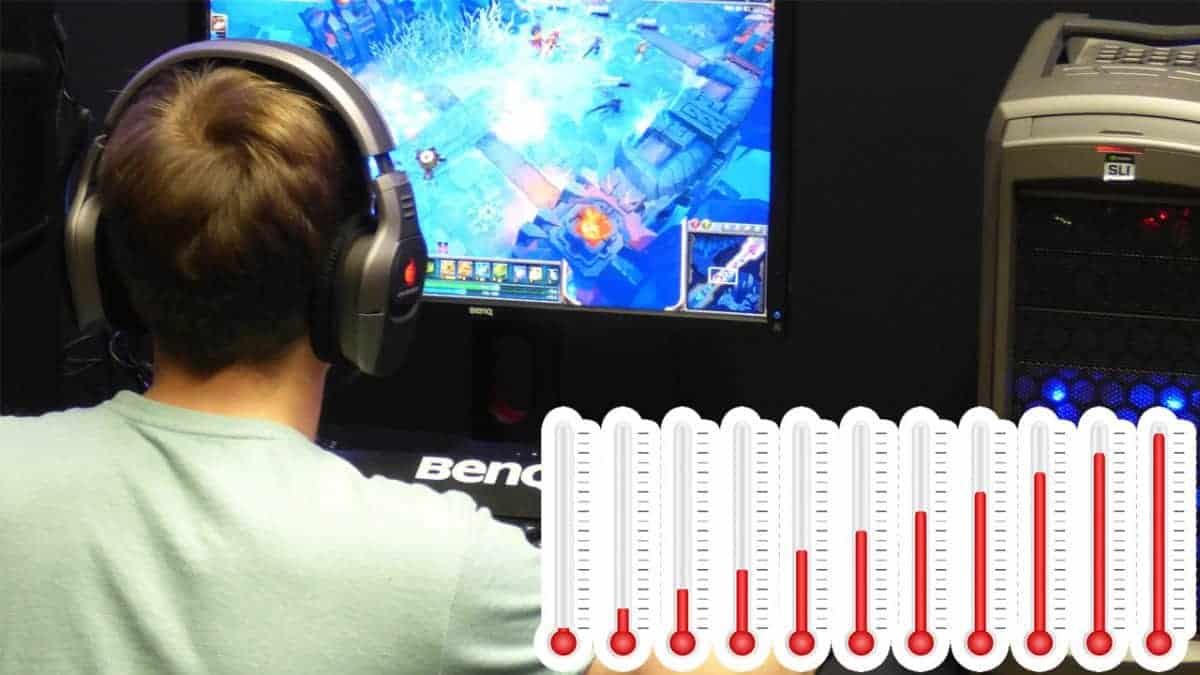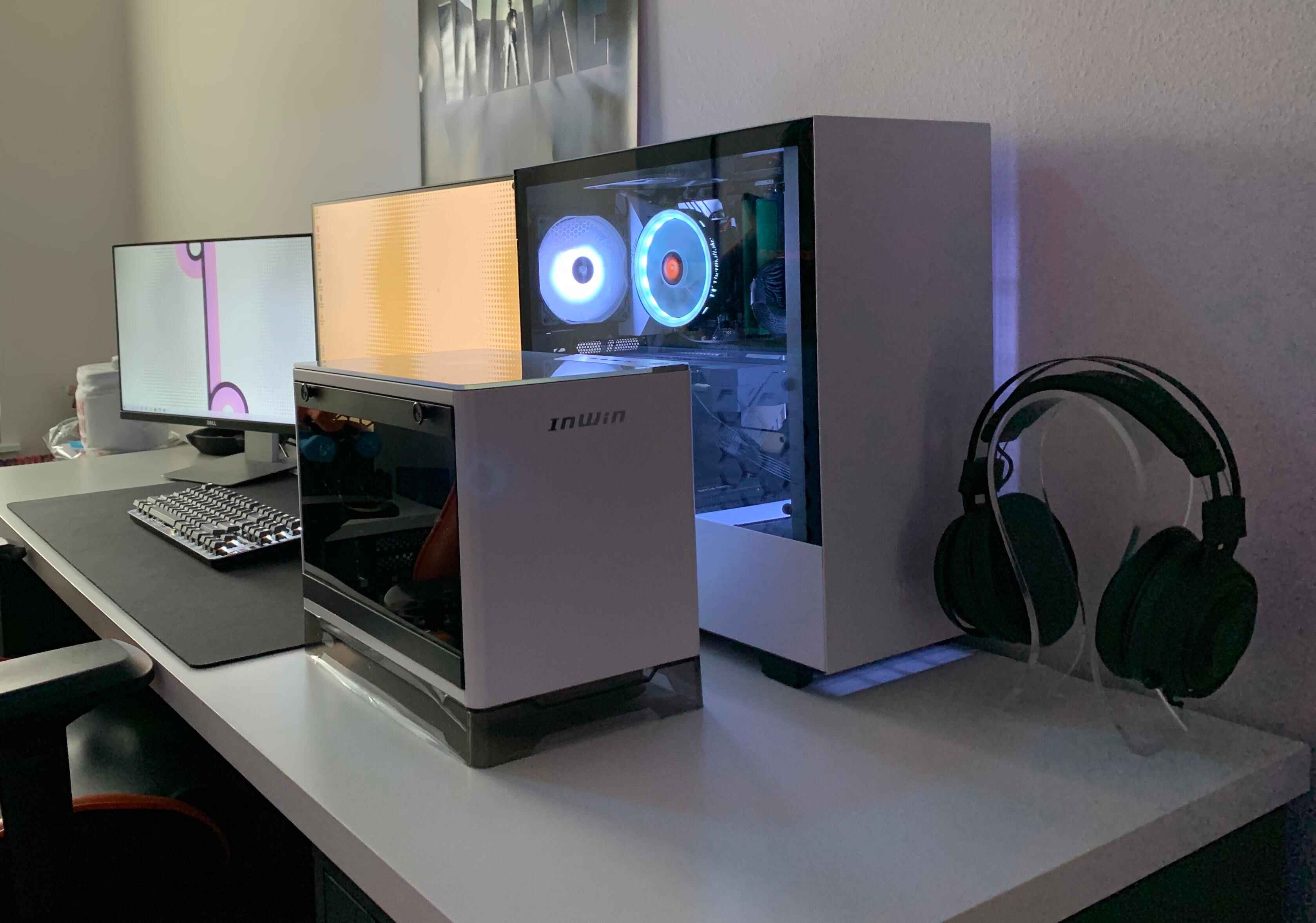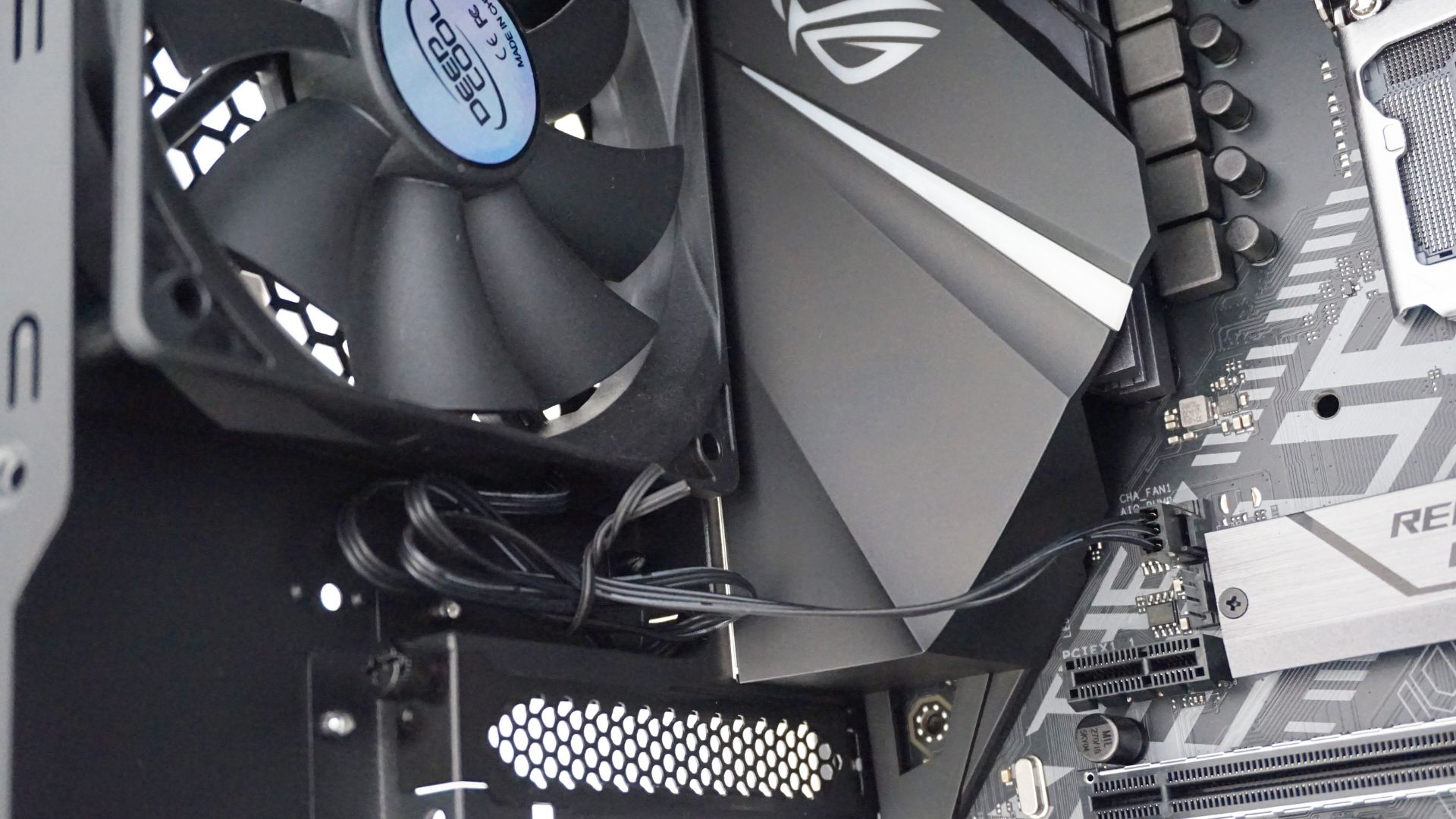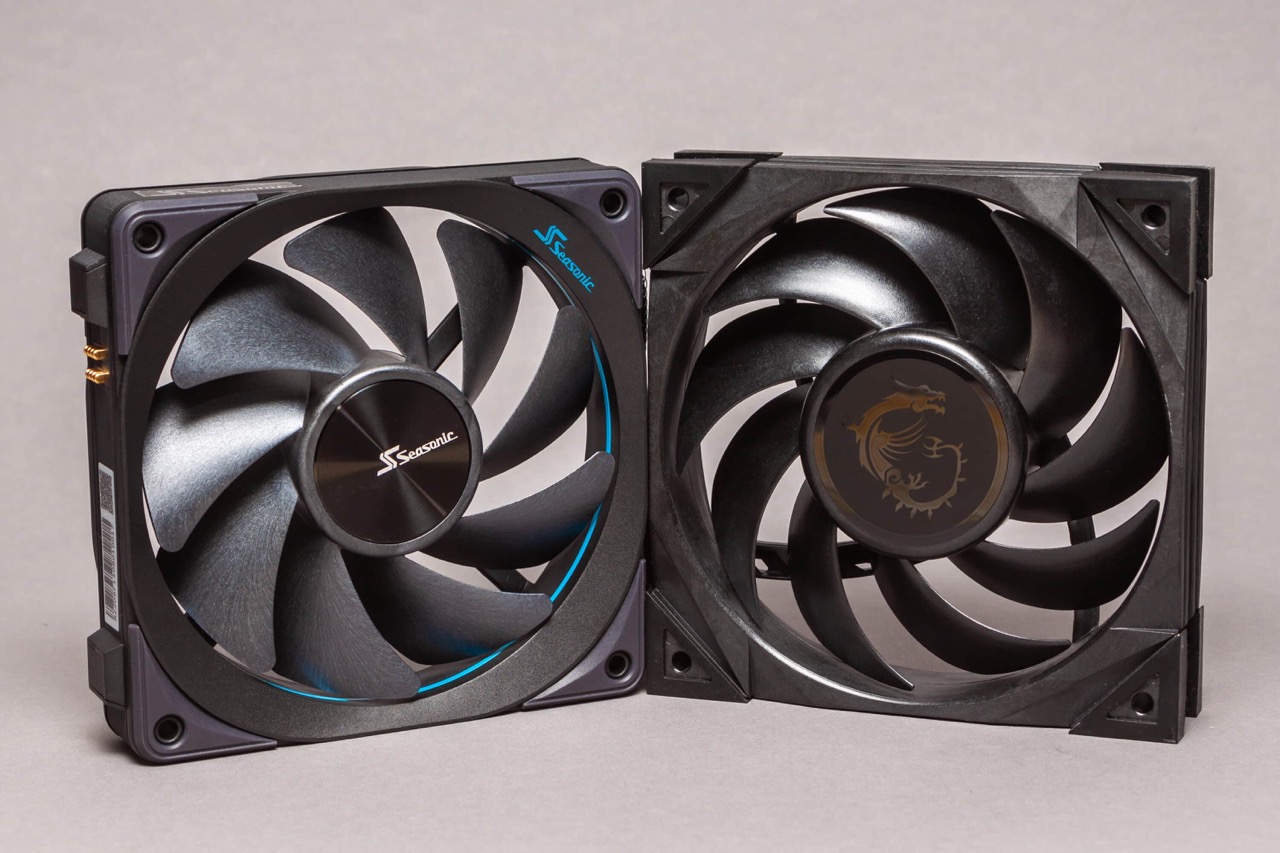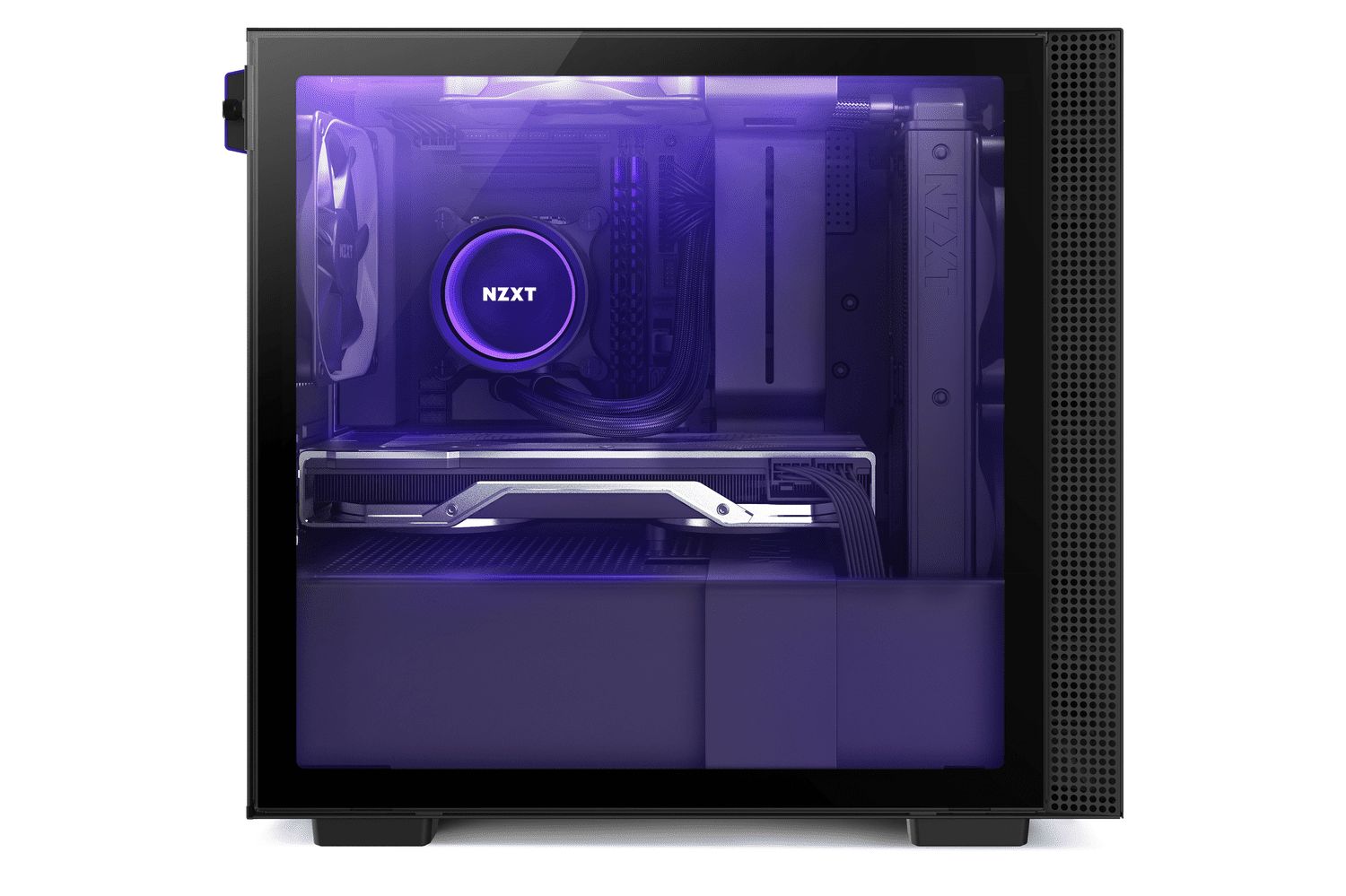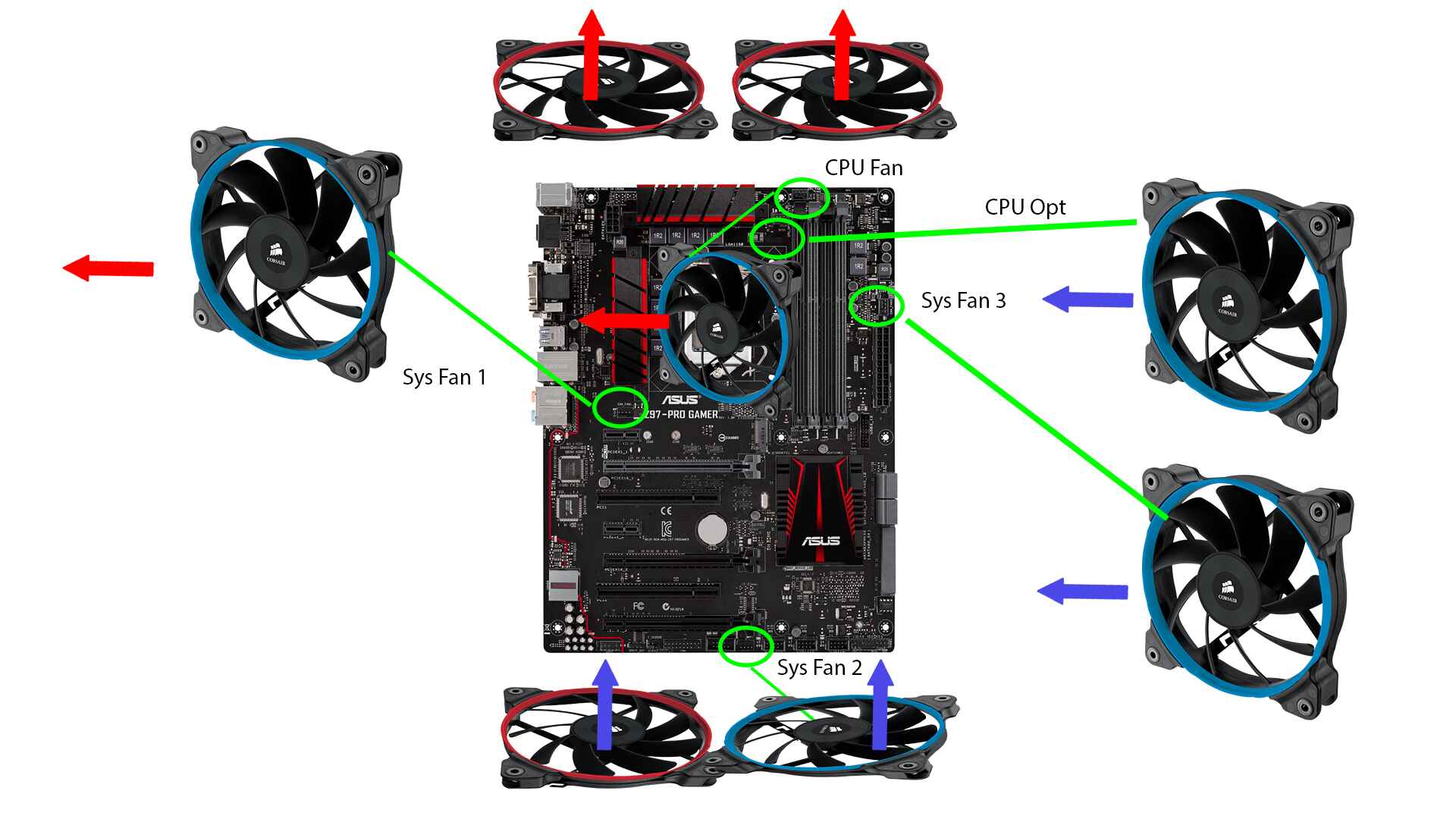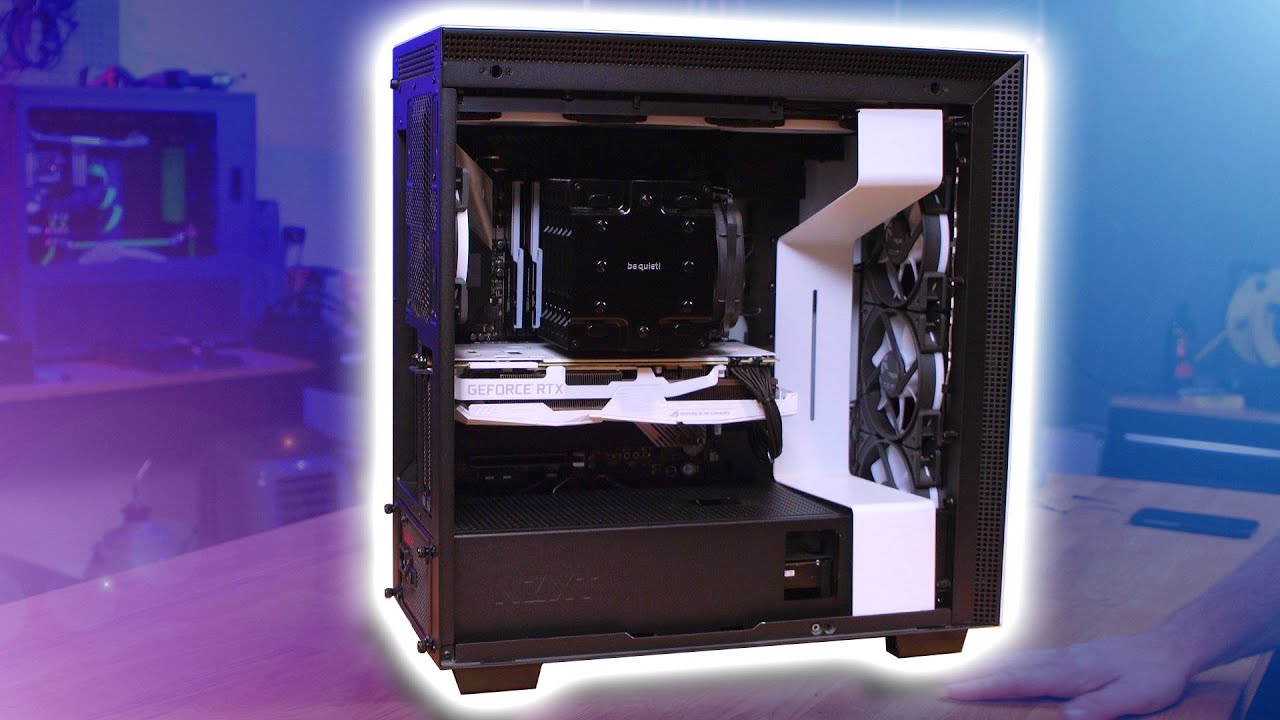Introduction
Welcome to the world of PC building and optimization! If you are a tech enthusiast or a gamer, chances are you have spent countless hours researching and selecting the perfect components for your PC setup. However, it’s important not to overlook the crucial aspect of proper airflow within your PC case. Achieving optimal airflow can significantly improve the performance, longevity, and stability of your system.
Proper airflow is essential because it helps dissipate heat generated by the components inside your PC case. As your system operates, the CPU, GPU, and other components generate heat, and without proper circulation and cooling mechanisms in place, this heat can accumulate, leading to thermal throttling, reduced performance, and even hardware failure.
In this article, we will explore the basic principles of airflow within a PC case and provide you with practical tips on how to optimize it. We’ll discuss assessing your PC case, removing obstructions, positioning and orienting components, managing cable management, and installing fans and filters. By following these guidelines, you’ll be able to create a well-ventilated and efficient PC system that will perform at its best.
Before we dive into the specifics, it’s important to understand that every PC case is unique, with different sizes, layouts, and potential airflow limitations. Therefore, it’s crucial to carefully assess your own PC case and adapt these tips accordingly to ensure maximum efficiency.
Now, let’s embark on this journey to discover the secrets of achieving proper airflow in your PC case, and unlock the full potential of your system!
Why Proper Airflow is Important
Proper airflow is vital for the optimal performance and longevity of your PC components. Without adequate airflow, your system can experience a myriad of problems ranging from increased noise levels to reduced performance and even hardware failure.
One of the main reasons why proper airflow is important is the effective management of heat. As your PC components work, they generate heat, and if this heat is not dissipated efficiently, it can cause them to overheat. Overheating can lead to thermal throttling, where the components automatically reduce their performance to prevent damage. This can result in a significant decrease in processing power and slow down your system’s performance.
Furthermore, continuous exposure to high temperatures can severely degrade the lifespan of your components. Heat can cause the delicate microelectronics to malfunction or even burn out, leading to permanent damage. By ensuring proper airflow and keeping the temperature at optimal levels, you can extend the lifespan of your PC components and save money on costly repairs or replacements.
In addition to temperature management, proper airflow also facilitates the removal of dust and other particles that can accumulate inside your PC case. Dust is a common enemy of PC enthusiasts as it can clog fans, obstruct ventilation, and insulate components, leading to even higher temperatures. This build-up of dust can affect the overall performance of your system and increase the risk of hardware failure.
Proper airflow also contributes to a quieter working environment. When components overheat, they often need to work harder, causing fans to run at higher speeds and generate more noise. With efficient airflow, your system can stay cool and maintain lower fan speeds, resulting in a quieter and more enjoyable user experience.
In summary, proper airflow is essential for managing temperature, preventing overheating, extending the lifespan of your PC components, reducing noise levels, and ensuring optimal performance. By implementing the tips and techniques we will discuss in this article, you can create an airflow system that maximizes the potential of your PC and enhances your overall computing experience.
Basic Principles of Airflow
Understanding the basic principles of airflow is crucial for creating an efficient cooling system within your PC case. By following these principles, you can optimize the flow of air and ensure that heat is effectively dissipated from your components.
The first principle is the concept of intake and exhaust. To establish proper airflow, you need a balance between the intake of cool, fresh air and the expulsion of hot air. This is typically achieved through strategically positioned fans and vents within your PC case. Intake fans draw in cool air from outside the case, while exhaust fans expel hot air generated by the components.
The next principle is the importance of creating a clear and unobstructed path for the airflow. This means removing any unnecessary obstructions within your PC case that could impede the circulation of air. Ensure that cables, components, and other objects are neatly organized and not blocking the airflow to or from any component.
You should also consider the positioning and orientation of your components. Some components, such as the CPU and GPU, generate more heat than others, and their positioning can impact airflow. Placing these components in areas with good ventilation, such as near exhaust fans or close to intake vents, can help dissipate the heat more efficiently.
Another essential principle is proper cable management. Messy cables not only make your PC case look cluttered but can also obstruct the airflow. Tangled cables can obstruct the movement of air and create pockets of stagnant air, leading to higher temperatures. Utilize cable management solutions like cable ties, velcro straps, and cable routing holes to organize and route your cables neatly along the case walls.
Finally, the use of fans and filters plays a vital role in maintaining airflow. Fans help move air through your system, and strategically positioning them in areas where hot air tends to accumulate, such as near the CPU or GPU, can aid in heat dissipation. Filters, on the other hand, prevent dust and debris from entering your case and clogging up the components and fans. Regularly cleaning or replacing these filters ensures continuous airflow and prevents dust build-up.
By adhering to these basic principles of airflow, you can establish a well-ventilated and efficient cooling system within your PC case. In the following sections, we will explore each principle in more detail, providing you with practical tips and techniques to achieve optimal airflow.
Assessing Your PC Case
Before implementing any modifications or improvements to your PC case’s airflow, it’s important to assess its current configuration. By conducting a thorough assessment, you can identify any potential obstacles or areas that require attention, leading to more effective airflow optimization.
Start by examining the overall design and layout of your PC case. Take note of the size, shape, and airflow patterns specified by the manufacturer. Understanding the manufacturer’s recommendations and specifications will give you a better understanding of the intended airflow design.
Next, evaluate the number and placement of existing fans in your PC case. Check if the fans are positioned for proper intake and exhaust and whether they are evenly distributed to provide adequate airflow. Assess the airflow direction and consider installing additional fans if necessary.
Inspect the internal components and identify any potential obstructions that might impede airflow. Look for cables, drives, or other hardware that may be blocking ventilation pathways or restricting the movement of air. Reorganize cables and components to create clear and unobstructed paths for the airflow.
Consider the size and positioning of your CPU cooler and graphics card. These components generate a significant amount of heat, and their positioning can affect the overall airflow within the case. Ensure that the CPU cooler is properly seated and oriented for optimal heat dissipation, and that the graphics card has ample space for ventilation.
Additionally, evaluate the condition and cleanliness of your PC case. Dust build-up can hinder airflow and cause components to overheat. If necessary, clean the case and components using compressed air or appropriate cleaning tools, ensuring that dust and debris are removed from filters, fans, and heat sinks.
Finally, take into account any specific requirements or limitations of your PC case. Some cases may have unique features or restrictions that affect airflow optimization. For example, cases with tempered glass panels may have limited ventilation options, while compact cases may have limited space for additional fans. Understanding these limitations will help you make informed decisions when modifying your case.
By assessing your PC case thoroughly, you will gain valuable insights into its current airflow situation. This knowledge will serve as a foundation for implementing effective strategies to optimize airflow and improve the overall performance and lifespan of your PC components.
Removing Obstructions
One of the key steps in optimizing the airflow within your PC case is removing any obstructions that impede the movement of air. These obstructions can disrupt the natural flow of air and prevent efficient cooling of your components. By identifying and eliminating these obstacles, you can create a clear and unobstructed pathway for the airflow.
Start by examining the internal layout of your PC case. Look for any cables, drives, or other hardware components that are blocking the ventilation pathways. Carefully reroute cables to prevent them from obstructing the airflow. Use cable management solutions, such as cable ties or routing holes, to keep cables neatly organized and away from critical airflow paths.
Consider rearranging or removing any unnecessary components or hardware that are obstructing the airflow. If you have additional storage drives or expansion cards that are not being utilized, consider removing them to free up space and improve the airflow. However, ensure that the removal of these components does not impact the functionality or expandability of your system.
Pay close attention to the positioning of your CPU cooler and graphics card. These components often have large heatsinks or fans that can obstruct airflow if not properly installed. Ensure that the CPU cooler is seated properly on the CPU socket and that the heatsink fins are aligned with the airflow direction. For the graphics card, check if any cables or other components are blocking the intake or exhaust fans. If necessary, reroute cables or adjust the positioning of the graphics card for optimal airflow.
Along with hardware obstructions, it is important to regularly clean dust and debris from your PC case. Dust can accumulate on fans, heatsinks, and filters, significantly reducing airflow and causing components to overheat. Use compressed air or specialized cleaning tools to remove dust from fans and heatsinks. Additionally, clean or replace the dust filters in your case to prevent dust from entering and clogging the components.
By removing obstructions and ensuring a clear pathway for airflow, you can significantly improve the cooling efficiency of your PC case. This not only helps maintain lower temperatures but also reduces the strain on your components, leading to improved performance and longevity.
Positioning and Orienting Components
The positioning and orientation of components within your PC case play a crucial role in optimizing airflow. By strategically placing and aligning hardware components, you can ensure efficient heat dissipation and improve the overall cooling effectiveness of your system.
Begin by considering the placement of your CPU cooler. The CPU generates a significant amount of heat, and the cooler’s positioning can affect the temperature in the surrounding area. Ensure that the CPU cooler is properly seated on the CPU socket and that the heatsink fins are aligned in the direction of airflow. This alignment allows the cooler to effectively draw in cool air and expel heated air.
Next, evaluate the positioning of your graphics card. Graphics cards are another major heat-generating component in a PC system. They typically have their own fans for cooling. Ensure that the card is inserted securely into the PCIe slot and that the fans are properly aligned with the ventilation holes in the case. This alignment allows for proper intake of fresh air and effective expulsion of hot air.
Consider the placement of other components, such as hard drives and SSDs. If possible, position them away from critical airflow paths to avoid obstructing the movement of air. Some cases have specific drive bays or brackets that allow you to mount drives in non-obstructive locations. This prevents the drives from blocking airflow to other components, ensuring maximum cooling efficiency.
Additionally, assess the positioning of your case fans. Fans play a crucial role in moving air throughout your system. Position intake fans strategically to draw in cool air from outside the case. Ideally, these fans should be located at the front or side panels, where they can easily draw air into the case. Place exhaust fans near the top or rear of the case to expel the hot air generated by the components. Remember to align the direction of the fans’ airflow according to the manufacturer’s recommendations for optimal cooling.
Consider investing in case fans with adjustable speeds. This allows you to fine-tune the airflow and noise levels of your system. During intensive tasks, you can increase the fan speed to enhance cooling, while reducing the speed during idle or low-demand periods to maintain a quieter environment.
Finally, pay attention to any specialized cooling features your PC case may have. Some cases come with built-in fan controllers, radiator mounts, or additional ventilation options. Utilize these features to further optimize airflow and enhance cooling performance.
By carefully positioning and orienting your components, you can create an airflow system that efficiently dissipates heat, ensures consistent cooling throughout your PC case, and maximizes the performance and lifespan of your components.
Managing Cable Management
Proper cable management is essential for maintaining good airflow within your PC case. Messy and tangled cables can obstruct the movement of air, create pockets of stagnant air, and contribute to higher temperatures. By effectively managing your cables, you can improve airflow, enhance cooling efficiency, and maximize the overall performance of your system.
Start by planning your cable layout before you begin building or modifying your PC. Consider the optimal path for each cable, ensuring that they are neatly and efficiently routed without blocking any ventilation points. Utilize cable ties, Velcro straps, or cable routing holes provided by your case to secure and guide the cables along the walls, away from critical airflow paths.
Organize your cables based on their type and function. Grouping cables together not only makes them easier to manage but also prevents them from tangling and obstructing airflow. Bundle power cables separately from data cables and ensure that they are arranged in a way that allows for good air circulation.
Consider using cable management accessories, such as cable sleeves or cable management channels, to further enhance the tidiness and organization of your cables. These accessories can help conceal and manage cables, preventing them from dangling or obstructing the airflow.
Pay special attention to the cables that connect to your components, such as the CPU power cable, GPU power cables, and SATA cables. Ensure that these cables are properly routed and do not impede the movement of air around the components. Take care not to excessively strain cables or bend them at sharp angles, as this can affect their performance and longevity.
Regularly inspect and maintain your cable management to ensure that cables haven’t become loose or tangled over time. As you add or remove components or make changes to your setup, take the opportunity to reorganize and optimize your cable management to maintain good airflow.
Additionally, consider the length of your cables when purchasing or selecting components. Longer cables can provide more flexibility in routing and reduce the risk of tangles or tension, while shorter cables can help minimize cable clutter and improve airflow.
Proper cable management not only improves airflow and cooling efficiency but also makes the interior of your PC case appear cleaner and more organized. It allows for easier troubleshooting and maintenance, as components and cables are easily accessible. By investing time and effort into managing your cables effectively, you can optimize airflow and ensure a cooler, more efficient, and visually appealing PC system.
Installing Fans and Filters
Installing fans and filters in your PC case is a crucial step towards achieving proper airflow and preventing dust buildup. Fans help circulate air to dissipate heat, while filters prevent dust particles from entering the case and clogging the components. By strategically placing fans and filters, you can optimize cooling efficiency and maintain a clean and dust-free system.
Start by examining your PC case to determine the available fan mounting locations. Most cases have designated spots for fans, such as the front, top, and rear panels. Assess the airflow patterns and consider installing fans in areas where hot air tends to accumulate, such as near the CPU, GPU, or power supply.
Choose fans that are compatible with your case and offer the desired airflow and noise levels. Consider the size of the fans, as larger fans typically move more air at lower speeds, resulting in quieter operation. Use a combination of intake and exhaust fans to establish a balanced airflow, ensuring adequate fresh air intake and efficient expulsion of hot air.
Mount intake fans in areas that draw in cool air from outside the case, such as the front panel or side panels. These fans should be positioned strategically to direct airflow towards critical components, such as the CPU and GPU, for effective heat dissipation. Orient the fans so that they pull air into the case rather than push it out.
Position exhaust fans at the rear or top of the case to expel the hot air that rises naturally. Locate these fans in areas where the expelled air is not recirculated back into the case, such as near the CPU cooler or power supply unit. Set the fans to push air out of the case, in the opposite direction of the intake fans.
Installing filters is equally important for maintaining a clean and dust-free system. Dust filters are typically placed over fan mounting areas to trap dust particles and prevent them from entering the case. Check if your case includes built-in filters, and if not, consider purchasing aftermarket filters specifically designed for your case’s fan mounts.
Regularly clean the filters to keep them in optimal condition. Remove them from the case and gently wash them with lukewarm water or use compressed air to blow away the accumulated dust. Once the filters are dry, reattach them to the case. Clean filters allow for better airflow and help in preventing dust from accumulating inside the case and on the components.
When installing fans and filters, ensure that they are securely attached using the provided screws or mounting mechanisms. Loose or improperly installed fans can lead to vibration and noise issues, while filters that are not properly secured may allow dust to bypass and clog components.
By thoughtfully selecting and installing fans and filters, you can establish an efficient cooling system that maintains proper airflow and keeps your PC components free from dust and debris.
Monitor and Maintain Airflow
Once you have optimized the airflow within your PC case, it is important to regularly monitor and maintain it to ensure continued effectiveness. Monitoring and maintaining airflow helps identify any issues or obstructions that may arise over time and allows for timely intervention to keep your system running at its best.
Regularly check the temperatures of your components using software monitoring tools or BIOS. High temperatures can indicate a potential airflow problem or the need for additional cooling measures. Keep an eye on the CPU and GPU temperatures, as these are typically the most heat-sensitive components. If you notice unusually high temperatures, it may be a sign of an obstructed airflow or a malfunctioning fan.
Inspect the fans and filters to ensure that they are clean and free from dust buildup. Over time, dust can accumulate on fans and filters, obstructing airflow and reducing cooling performance. Regularly clean the filters by removing them from the case and gently washing or using compressed air to remove the accumulated dust. Similarly, check the fans for any dust buildup and clean them if necessary.
Keep an eye on the fan speeds and adjust them if required. Some motherboards or fan control software allow you to adjust the fan speeds manually or using predefined profiles. Monitoring the fan speeds and making adjustments can help maintain an optimal balance between cooling performance and noise levels. Increase the fan speeds during heavy usage or high ambient temperatures and decrease them during idle or low-demand periods to ensure efficient airflow without unnecessary noise.
Periodically inspect the cables and components inside the case to check for any relocations or adjustments that may have affected the airflow. Ensure that cables remain neatly organized and do not obstruct the ventilation pathways. Look for any loose connections or cables that may have come loose over time and resecure them properly.
Consider conducting a comprehensive cleaning of your PC case at regular intervals. This involves a more thorough dusting of the internal components, including fans, heat sinks, and other areas where dust tends to accumulate. Use compressed air or a soft brush to remove the dust, taking care not to damage any delicate components. A clean PC case ensures unobstructed airflow and prevents heat buildup.
Finally, stay vigilant for any strange noises or performance issues that may indicate a problem with the airflow, such as the spinning of a fan reduced or uneven. Unusual noises or a sudden drop in performance could be a sign of a malfunctioning fan or an obstruction. Address these issues immediately to prevent any further damage to your components and maintain efficient airflow.
By regularly monitoring and maintaining your PC’s airflow, you can ensure that it continues to operate at optimal levels, providing efficient cooling and prolonging the lifespan of your components.







